Bag Filling and Sealing Machine
Qualipak’s latest innovation is the Bag Filling and Sealing Machine! Simplify your packaging with accuracy and speed. Consistent filling is guaranteed along with hermetic sealing which maintains product freshness. Improve productivity, and quality and lower labour costs in one package.
Showing all 8 results
-
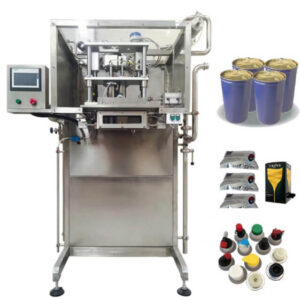
Automatic Bag in Box Filling Machine
View Machines -

Case Sealer | Carton Sealer
View Machines -

Drip Coffee Bag Filling Packing Machine
View Machines -

Hand Held Heat Sealer
View Machines -
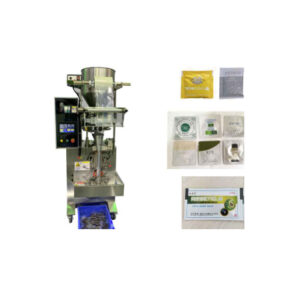
Powder Filling Machine 3/4 Side Sealing
View Machines -
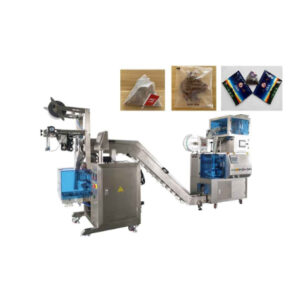
Pyramid Tea Bag Packing Machine
View Machines -
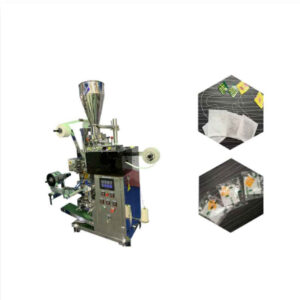
Tea Bag Filling Machine Dual Bag
View Machines -
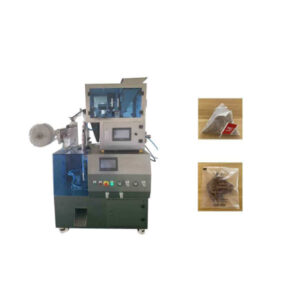
Triangle Tea Bag Packing Machine
View Machines
What is Bag Filling & Sealing Machine
A machine that fills and seals bags is a device used in industries that package goods to fill bags efficiently with items like powders, granules or liquids and then tightly and properly seal them.
Introduction to Bag Filling and Sealing Machine
Efficiency and precision are essential in the fast world of today. This is particularly so in the manufacturing and packaging industries. Packaging solutions have changed significantly with bag filling and sealing machines being an example of technological development whereby streamlined processes have been put in place to make sure that they give accurate results, are fast as well as reliable. These machines have found use in many sectors including agriculture, chemicals, food and pharmaceuticals among others. In this comprehensive guide, we will delve into the intricacies of bag-filling and sealing machines, exploring their types, working processes, applications, functions, benefits and future trends.
Types of Bag Filling Sealing Machines
There are different types of bag-filling and sealing machines for specific packaging needs. The operational mechanisms used by these machines categorize them; the kind of bags they handle also determine how they are classified while the products being packaged play a role too. Some common types include:
1. Vertical Form Fill Seal (VFFS) Machines
These kinds of machines are highly popular in the packaging industry due to their versatility. They form bags from flat rolls of film and then fill them up before sealing them vertically. These can work on various sizes as well as materials for bags such as the VFFS machine is ideal for coffee, snacks rice or sugar.
2. Horizontal Form Fill Seal (HFFS) Machines
In contrast to VFFS machines which form, fill and seal bags horizontally HFFS ones do that work vertically as well.
Horizontal orientation during the filling and sealing process is required by products suitable for HFFS packaging examples.
Packaging items like bread candies chocolates hardware components etc. usually use HFFS technologies.
3. Pre-made Pouch Filling & Sealing Machines
Pre-determined pouch filling & closing devices that take care of pre-formed pouches or bags are considered easy to use.
The main reason behind their popularity stems from their ability to handle several styles of pouches such as stand-up, flat and zipper types.
Pre-made pouch filling and sealing machines are often used in the food, beverage and pharmaceutical sectors.
4. Open Mouth Bagging Machines
Open-mouth bagging machines are special equipment that fill open-ended bags with flowing or semi-flowing products.
These usually have a filling mechanism either based on gravity or auger feeding and can be designed to accommodate a wide variety of bag sizes and materials.
Open-mouth bagging machines can be found in the agriculture sector, pet food producers among others making construction materials.
5. Valve Bagging Machines
Valve bagging machines are made for valve bags fill which already has a preinstalled valve or sleeve that makes it easy to fill fast and efficiently.
For example, these are usually used to package powders, granules, aggregates etc., in cement industries, chemicals among minerals.
The valves of these devices guarantee accuracy during the filing process while preventing spillage and any unclean closure leading to contamination.
Working Process of Bag Filling & Sealing Machines
The working process of bag filling and sealing machines is dependent on the type of machine and configuration. Nevertheless, there are common principles across different models. Here is a general outline of how they work:
Bag Formation (for VFFS and HFFS machines): Packaging material (often film rolls) is guided through a set of rollers/guides after it’s unwound in VFFS & HFFS. The film then forms a tube or flat sheet depending on machine configuration.
FILM SEALING: The film edges are continuously sealed longitudinally to form either a continuous tube (VFFS) or a flat bottom (HFFS). Sealing methods such as heat sealing, ultrasonic sealing or impulse sealing are used depending on the packaging material and product requirements.
PRODUCT FILLING: Filled with the desired quantity of product. Depending on the characteristics of the product, the filling mechanism may range from volumetric fillers and auger fillers to weighers and liquid pumps.
SEALING (Final Step): After being filled, bags are top-sealed (VFFS) or along the remaining sides (HFFS) so that all products are enclosed in them securely. This stage may also include additional features like tear notches, zipper closures and date coding.
BAG DISCHARGE: Upon discharge from the machine, these sealed bags can further be processed manually or using an automated conveyor system for distribution purposes.
For pre-made pouch filling and sealing machines, involves loading already formed pouches into machines before filling them with a product and lastly using either heat, pressure or ultrasonic technology to seal them.
Likewise, open-mouth bagging machines and valve bagging machines have unique processes based on their bag types and filling techniques respectively.
Bag Filling & Sealing Machines Applications
Bag-filling and sealing machines have wide applications in various industries due to their versatility, efficiency, and reliability. Some examples include:
Food Packaging: The food industry extensively uses bag filling and sealing machines for a variety of products including snacks, cereals, frozen foods/spices/ready-to-eat meals etc.
Pharmaceutical Packaging: In the pharmaceutical sector these are useful for packing tablets, capsules, powders etc as per given standards/regulations/guidelines.
Chemical & Petrochemical Industries: These play an important role in the safe handling/packaging/distribution of chemicals/fertilizers/detergents/petroleum products.
Agricultural Products: Bag filling and sealing machines are indispensable in the agricultural sector for efficient packaging and distribution of seeds, fertilizers, animal feed and grains.
Construction Materials: The bag filling and sealing machine is used to package cement, sand, and gravel among other construction materials hence facilitating their handling as well as storage at construction sites.
Pet Food & Animal Feed: Pet food manufacturers use these machines to pack dry kibble, treats and supplements for pets to maintain their freshness and hygiene.
Hardware & Industrial Products: Hardware components/fasteners/industrial supplies come in different bag formats which can be packed by bag filling and sealing machines.
Medical Supplies: Bag filling and sealing machines assist in the proper packaging of medical supplies like surgical gloves/bandages/medical disposables meant for hospitals or health facilities.
Functions of Bag Filling & Sealing Machines
Bag filling and sealing machines have several primary roles that they perform during the packaging process such as:
Accurate Filling: The machines eliminate wastage through precise dosing/filling of products thereby ensuring uniformity in quantity per product line.
Sealing Integrity: Properly sealed packaged goods are what this equipment promises; no contamination/spoilage/tampering can occur under normal conditions/following regular usage.
Packaging Efficiency: Packaging Efficiency filling/sealing machines help streamline packing operations by automating repetitive tasks while reducing labour costs plus increasing throughput levels.
Product Protection: As a result of giving a tight seal, these ensure quality preservation/freshness/shelf life, especially for perishable products.
Versatility: Versatility in bag sizes, sealing options, and materials is offered by sachet filling and sealing machines which means it can cater for a wide array of packaging needs.
Compliance & Traceability: In regulated industries such as food and pharmaceuticals, these
Advantages of using Bag filling machine
Increased Efficiency: Several manual labour processes at the production stage are automated by filled bag sealing machines. These systems’ efficiency ensures that products are packaged faster with increased productivity.
Cost Savings: Through the use of bag filling and sealing machines output waste will be minimized and as such operational costs will also be reduced, namely labour costs, material costs, and overhead costs. Additionally, because product filling remains consistent in this respect; it implies that consumption is optimized thus saving on operational expenses.
Improved Product Quality: Precise amounts of products are dispensed by these machines which enable them to prevent under or over-filling of products. Moreover, tight sack sealing keeps out external impurities thereby maintaining quality standards while ensuring that products remain intact.
Enhanced Safety: Employees can operate without the risk associated with manually handling heavy bags or coming into contact with hazardous substances during automated bag filling and sealing processing. It makes workplaces safer.
Extended Shelf Life: Properly sealed bags help preserve the freshness and shelf life of packaged products by protecting them from moisture, oxygen, and other external factors that can lead to spoilage or degradation. This makes customer satisfaction very high because the product’s expiration dates are extended.
Customization Options: Bag sizes, materials used in making the pack as well as methods employed in closing those packages could be changed flexibly by manufacturers utilizing these types of packaging equipment depending on special product requirements or consumer preferences. The aim here is to capture different market segments effectively for many firms through versatility.
Consistent Packaging: With each filled sack being done based on the same specifications through automatic procedures assures uniformity in packing leading to better brand image creation which leads to more trust among the consumers. It also enhances customer loyalty as uniform packaging is associated with product quality and reliability.
Reduced Environmental Impact: By minimizing product wastage and optimizing packaging materials, bag filling and sealing machines contribute to sustainability efforts by reducing the overall environmental footprint of packaging operations. Moreover, some types of machines are environmentally friendly in that they may utilize recyclable materials or be limited in sizes of packages.
Compliance with Regulations: In regulated industries such as food, pharmaceuticals, and chemicals, bag filling and sealing machines help companies comply with strict regulatory requirements regarding packaging standards, labelling, and traceability. This ensures adherence to quality and safety regulations, reducing the risk of fines or penalties for non-compliance.
Scalability: Bag filling and sealing machines are scalable to accommodate growing production demands, allowing businesses to expand their operations seamlessly without compromising efficiency or quality. This is what makes most firms stay relevant even when there are changes in market conditions through this feature.
Maintenance and Training
Maintenance of Bag Filling & Sealing Machines
Regular maintenance is essential to keep bag filling and sealing machines running smoothly and efficiently; several key maintenance tasks help achieve this objective:
Cleaning: Regular cleaning of machine components such as filling hoppers, sealing bars, conveyors etc helps prevent contamination from products being packaged into bags thereby causing the equipment to operate at sub-optimal performance levels due to interference from foreign particles.
Lubrication: Reducing friction on moving parts extends the component life span as well as ensures a smooth functioning machine hence these parts must be lubricated according to manufacturer guidelines.
Inspection: Routine inspection allows operators to see if there are any wear-out signs / damaged mechanical misalignment that need attention. Detecting problems promptly is critical for avoiding expensive breakdowns so that timely repairs can be effected.
Replacement of Wear Parts: Elements that are prone to wearing out such as gasketing materials, drive belts, and bearings should be replaced regularly to maintain the machine’s performance at optimal levels and prevent sudden breakdowns.
Calibration: Regular calibration of the scales, sensors, and other measuring devices ensures accurate filling and sealing of bags with minimum giveaways and meets quality standards.
Software Updates: In case your machine is controlled using software it is necessary to upgrade your firmware or software patches to optimize its performance, or even introduce new features or improvements.
Training Maintenance Personnel: Empowering maintenance personnel through comprehensive training regarding problem-solving skills, preventive maintenance schedules and equipment-specific guidelines will keep them able to do effective repair and maintenance jobs.
Documentation: These records help in the future tracking of machines’ performance indicators as well as the identification of recurring problems or areas for improvement. The following are some examples:
Training for Operators and Maintenance Personnel
There must be proper training for operators and maintenance personnel involved in running bag-filling and sealing machines safely. This training process covers several key elements including:
Machine Operation: Operators ought to receive extensive training on how to operate machine controls, adjust settings, load packaging materials as well and monitor the packaging process hence ensuring their proper operation leading to high-quality products.
Safety Procedures: Among the items that should be included in this course are; safety protocols like starting up or shutting down the machine respectively among other emergency stop processes commonly practised while handling materials plus any other equipment used within the vicinity.
Troubleshooting: Common troubleshooting methods shall also be taught to both operators and maintenance staff so that they can easily identify problems earlier enough before they cause more damage hence avoiding unnecessary downtimes which tend to reduce productivity rates.
Preventive Maintenance: As part of their curriculum manual routine service tasks like cleaning tasks, and greasing tasks coupled with testing procedures need to form part of their knowledge base thereby ensuring continued optimum performance of the machine.
Understanding Machine Components: A good number of industrial actors and service providers would second to it that operators as well as their support team must have a clear grasp on the different parts of these machines including sensors, actuators, pneumatic systems and electrical controls for diagnostic purposes.
Continuous Learning: Since technology evolves and new features come up, this means that going for more training or seminars, therefore, provides an avenue through which they can learn about some of the latest trends in bag filling and sealing technology. Some popular methods are:
Certification Programs: Proactively seeking participation in manufacturer-sponsored training programs or certification courses will certainly enhance the operator’s expertise and knowledge base thereby improving their efficacy as far as handling particular models is concerned.
Future Trends in Bag Filling and Sealing Machines
Automation and Robotics: The integration of automation and robotics technologies is advancing, leading to more sophisticated bag-filling and sealing systems. Automated processes will streamline production, improve precision, and reduce labor costs; while robotics can boost flexibility and adaptability in handling various packaging tasks.
IoT and Industry 4.0 Integration: These will form a major part of bag-filling-and-sealing machines where remote monitoring, predictive maintenance plus data-driven decision-making are enabled using internet connectivity-related devices. It is within this context that one gets real-time insights concerning machine performance metrics such as production efficiency levels alongside product quality thus driving process improvement initiatives forward.
Smart Packaging Solutions: To enhance traceability plus authentication abilities when filled with smart packaging technologies like sensors or RFID tags, QR codes could be embedded in these bags hence helping us know that we are dealing with genuine products. In addition to this, they also provide relevant information about the freshness of what they are wrapping whereby origin plus usage instructions form part of some details being outsourced on packaging materials thus enhancing transparency among consumers.
Flexible Packaging Formats: The lightweight, space-saving and convenient advantages of flexible packaging formats such as pouches, sachets and stand-up bags will see their demand increase continuously. To meet changing consumer preferences and market trends, bag-filling and sealing machines will be developed to accommodate various sizes, shapes and materials used in flexible packaging.
Sustainable Packaging Solutions: In a bid to counter increasing environmental concerns, bag filling and sealing machines will incorporate sustainable packaging solutions like recyclable materials, and biodegradable films as well as eco-friendly ways of sealing. On the other hand, energy-efficient designs would be pivotal in reducing waste while a closed-loop recycling system will help limit any negative impact on the environment during packaging operations.
Advanced Material Handling Systems: The optimization of the packing process from product handling through palletizing can only be realized if advanced material handling systems such as robotic pick-and-place systems are incorporated alongside automated conveyors and palletizing robots. Efficient material flow & logistics solutions would enhance productivity, and reduce bottlenecks thereby improving overall throughput.
Multi-Functional Machines: Bag filling and sealing machines of the future are going to have multi-functional capabilities which could enable manufacturers to pack a wider range of products at higher flexibility & efficiency levels. This way quick changeovers between different sizes and products among others can be achieved easily maximising production versatility using modular designs therefore customers need to understand the principles behind these design elements so that they can make better choices based on what is best for them when selecting their next bag filling & sealing machine.
Enhanced Quality Control Systems: To ensure uniformity of product quality together with adherence to regulation standards, there should also be integration of advanced quality control systems into bag filling and sealing machines. As a result, this would minimize waste by allowing non-conforming products to be detected in real-time thus enhancing efficiency since they may be rejected automatically upon being identified via leak detection sensors hence preventing waste.
Customization And Personalization: However customization and personalization options will increasingly be sought by manufacturers of bag-filling and sealing machines to address the varying needs of consumers and accommodate niche markets. By this, they will be able to come up with unique designs that will help them own their package printed on them as a way of promoting themselves.
Globalization And Market Expansion: As markets become more globalized, bag-filling and sealing machines need to use different packaging requirements, regulatory standards, and cultural preferences across different regions. In light of this modular designs as well as multi-language interfaces among others would be very essential for the facilitation of market expansion hence international competitiveness.
Frequently Asked Questions
1. What is a bag filling and sealing machine?
A bag filling and sealing machine is an automatic device from many industries that fills bags with products such as powders, granules liquids or solids then tightly seals them for storage, transport or sale in retail stores.
2. What types of products can be packaged using bag filling and sealing machines?
Bag filling and sealing machines are flexible so they can pack a variety of items including food stuffs like snacks grains spices; drugs; chemicals; animal feeds; farm products plus industrial materials.
3. What are the main components found in a bag filling and sealing machine?
The main components include a hopper or feeder depending on the nature of the product used, filler mechanism (augers/ weighers/pumps), bag forming section, seals (for top/bottom/side) and control systems for automation & monitoring respectively.
4. What types of bags can be used with bag filling and sealing machines?
These include pillow bags gusseted bags stand-up pouches valve bags open-mouth bags pre-formed pouches made from plastic films laminates paper woven fabrics etc.
5. How do I choose the right bag-filling and sealing machine for my application?
The choice of the machine relies on different aspects like the product type and its characteristics, the format of desired packaging, production volumes, speed requirements and budgets. This can be resolved by consulting a well-known supplier or manufacturer.
6. Why are bag filling and sealing machines preferred to manual packaging methods?
There is therefore need to understand why one should opt for a bag filling and sealing machine instead of other options available in the market.
7. What are some of the benefits of using automated bag-filling and sealing machines?
Automated bag filling and sealing machines have several benefits such as increased efficiency, higher production output, improvement in accuracy as well as consistency reduced labour costs, enhanced product protection, and compliance with regulatory standards among others.
8. How do I maintain a bag filling and sealing machine in good condition?
Some regular maintenance practices include cleaning machine components, lubricating moving parts, inspecting for wear or damage, replacing worn-out parts calibrating sensors and keeping detailed maintenance records. One must follow the manufacturer’s guidelines as well as schedules.
9. Which precautions should be taken when operating a bag filling and sealing machine?
Before handling this equipment there is a need for employees to go through comprehensive training on how it works.
